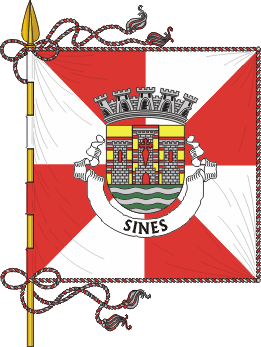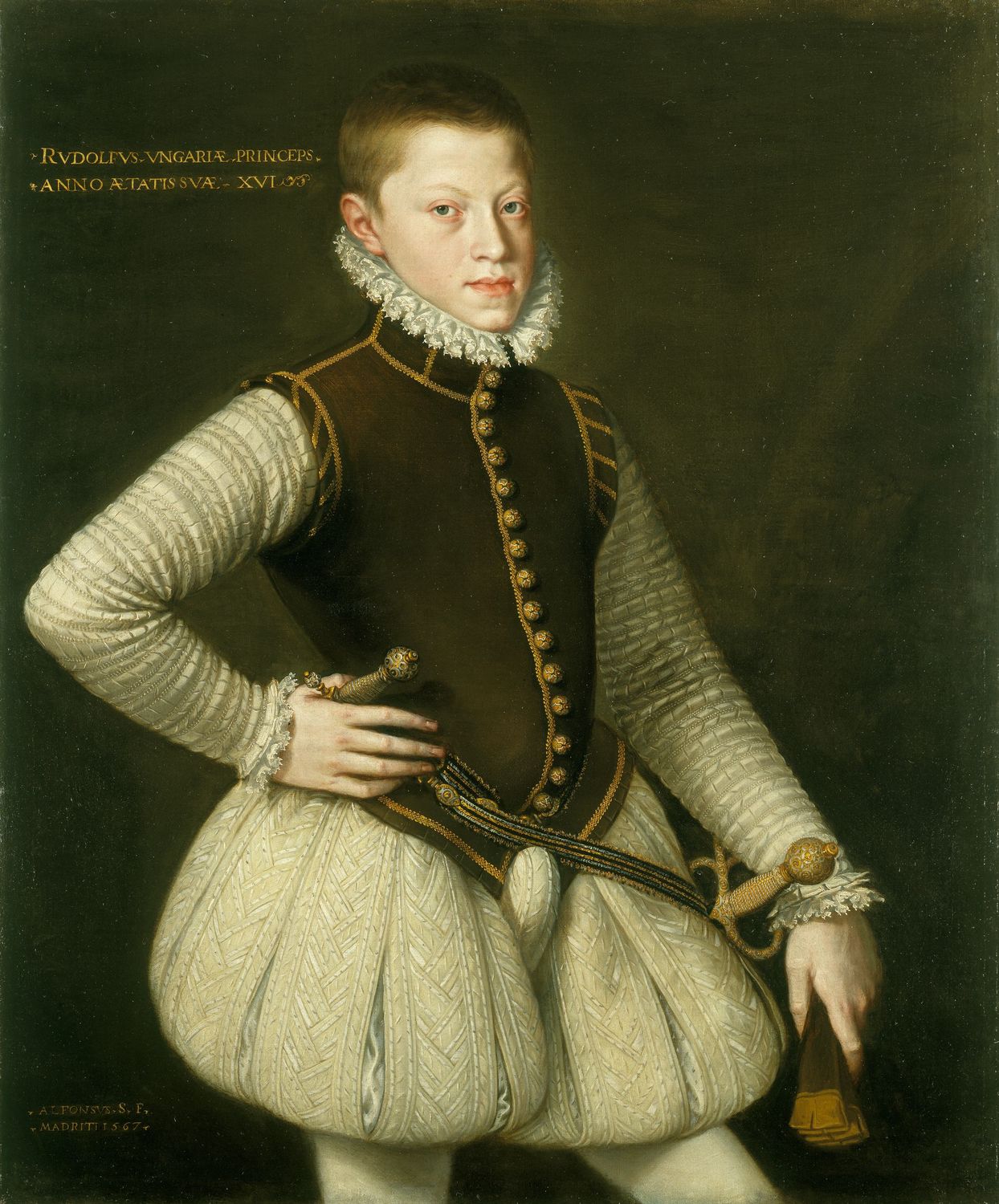|
Kunstweg
Bürgi's Kunstweg is a set of algorithms developed by Jost Bürgi in the late 16th century.Staudacher, S., 2014. Jost Bürgi, Kepler und der Kaiser. Verlag NZZ, Zürich. They are used to calculate sines to arbitrary precision.. Bürgi used these algorithms to calculate a Canon Sinuum, a sine table in increments of 2 arc seconds. It is believed that the table featured values accurate to eight sexagesimal places. Some authors have speculated that the table only covered the range from 0° to 45°, although there is no evidence supporting this claim. Such tables were crucial for maritime navigation. Johannes Kepler described the Canon Sinuum as the most precise sine table known at the time.Max Caspar, ''Johannes Kepler Gesammelte Werke'', Band XVIII, page 149-150, Letter from Kepler to Landgraf Philipp von Hessen, december 1623Bayerische Akademie der Wissenschaften/ref> Bürgi explained his algorithms in his work ''Fundamentum Astronomiae'' , which he presented to Emperor Rudolf II i ... [...More Info...] [...Related Items...] OR: [Wikipedia] [Google] [Baidu] |
Jost Bürgi
Jost Bürgi (also ''Joost, Jobst''; Latinized surname ''Burgius'' or ''Byrgius''; 28 February 1552 – 31 January 1632), active primarily at the courts in Kassel and Prague, was a Swiss clockmaker, mathematician, and writer. Life Bürgi was born in 1552 Lichtensteig, Toggenburg, at the time a subject territory of the Abbey of St. Gall (now part of the canton of St. Gallen, Switzerland). Not much is known about his life or education before his employment as astronomer and clockmaker at the court of William IV in Kassel in 1579; it has been theorized that he acquired his mathematical knowledge at Strasbourg, among others from Swiss mathematician Conrad Dasypodius, but there are no facts to support this. Although an autodidact, he was already during his lifetime considered as one of the most excellent mechanical engineers of his generation. His employer, William IV, Landgrave of Hesse-Kassel, in a letter to Tycho Brahe praised Bürgi as a "second Archimedes" (''quasi in ... [...More Info...] [...Related Items...] OR: [Wikipedia] [Google] [Baidu] |
Canon Sinuum (Bürgi)
The ''Canon Sinuum'' was a historic table of sines thought to have given the sines to 8 sexagesimal places between 0 and 90 degrees in steps of 2 arc seconds. Some authors believe that the table was only between 0 and 45 degrees. It was created by Jost Bürgi at the end of the 16th century. Such tables were essential for navigation at sea. Johannes Kepler called the ''Canon Sinuum'' the most precise known table of sines. This table is thought to be lost. The ''Canon Sinuum'' was computed by Bürgi's algorithms explained in his work Fundamentum Astronomiae presented to Emperor Rudolf II. in 1592.Staudacher, S., 2014. Jost Bürgi, Kepler und der Kaiser. Verlag NZZ, Zürich. These algorithms made use of differences and were one of the early uses of difference calculus. The largest trigonometrical table actually contained in the Fundamentum Astronomiae is a table giving the sines for every minute of the quadrant and to 5 to 7 sexagesimal places. The manuscript of Fundamentum Ast ... [...More Info...] [...Related Items...] OR: [Wikipedia] [Google] [Baidu] |
Fundamentum Astronomiae
''Fundamentum Astronomiae'' is a historic manuscript presented by Jost Bürgi to Emperor Rudolf II in 1592. It describes Bürgi's trigonometry based algorithms called Kunstweg which can be used to calculate sines at arbitrary precision.Staudacher, S., 2014. Jost Bürgi, ''Kepler und der Kaiser''. Verlag NZZ, Zürich. General Bürgi took special care to avoid his method becoming public in his time. However, Henry Briggs (mathematician) (1561-1630) was acquainted with the method, likely via a link to John Dee who knew Christoph Rothmann, a colleague of Bürgi at the court. Method Bürgi used these algorithms, including multiplication table in sexagesimal system, to compute a '' Canon Sinuum'', a table of sines to 8 sexagesimal places in steps of 2 arc seconds. Such tables were extremely important for navigation at sea. Bürgi's method only uses additions and halving, his procedure is elementary and it converges from the standard method. The iterative algorithm obtains good appro ... [...More Info...] [...Related Items...] OR: [Wikipedia] [Google] [Baidu] |
Algorithm
In mathematics and computer science, an algorithm () is a finite sequence of Rigour#Mathematics, mathematically rigorous instructions, typically used to solve a class of specific Computational problem, problems or to perform a computation. Algorithms are used as specifications for performing calculations and data processing. More advanced algorithms can use Conditional (computer programming), conditionals to divert the code execution through various routes (referred to as automated decision-making) and deduce valid inferences (referred to as automated reasoning). In contrast, a Heuristic (computer science), heuristic is an approach to solving problems without well-defined correct or optimal results.David A. Grossman, Ophir Frieder, ''Information Retrieval: Algorithms and Heuristics'', 2nd edition, 2004, For example, although social media recommender systems are commonly called "algorithms", they actually rely on heuristics as there is no truly "correct" recommendation. As an e ... [...More Info...] [...Related Items...] OR: [Wikipedia] [Google] [Baidu] |
Sines
Sines () is a town and a municipality in Portugal. The municipality, divided into two parishes, has around 14,214 inhabitants (2021) in an area of . Sines holds an important oil refinery and several petrochemical industries. It is also a popular beach spot and the main fishing harbour of Alentejo region. The municipality is bordered to the north and east by the municipality of Santiago do Cacém, south by Odemira and west by the Atlantic Ocean. The coastline of the city, south of São Torpes, is part of the Southwest Alentejo and Vicentine Coast Natural Park. History Vestiges of a few settlements have today been discovered in archaeological sites, such as Palmeirinha and Quitéria, that attest to the age of human settlements in Sines. Arnaldo Soledade (1981) noted that these Visigoths, identified as ''Cinetos'', may have been the original civilization that gave rise to the community, suggesting the local toponymy may have derived from this; ''Cinetos'', to Cines and, fina ... [...More Info...] [...Related Items...] OR: [Wikipedia] [Google] [Baidu] |
Arc Seconds
A minute of arc, arcminute (abbreviated as arcmin), arc minute, or minute arc, denoted by the symbol , is a unit of angular measurement equal to of a degree. Since one degree is of a turn, or complete rotation, one arcminute is of a turn. The nautical mile (nmi) was originally defined as the arc length of a minute of latitude on a spherical Earth, so the actual Earth's circumference is very near . A minute of arc is of a radian. A second of arc, arcsecond (abbreviated as arcsec), or arc second, denoted by the symbol , is a unit of angular measurement equal to of a minute of arc, of a degree, of a turn, and (about ) of a radian. These units originated in Babylonian astronomy as sexagesimal (base 60) subdivisions of the degree; they are used in fields that involve very small angles, such as astronomy, optometry, ophthalmology, optics, navigation, land surveying, and marksmanship. To express even smaller angles, standard SI prefixes can be employed; the milliarcse ... [...More Info...] [...Related Items...] OR: [Wikipedia] [Google] [Baidu] |
Navigation
Navigation is a field of study that focuses on the process of monitoring and controlling the motion, movement of a craft or vehicle from one place to another.Bowditch, 2003:799. The field of navigation includes four general categories: land navigation, marine navigation, air navigation, aeronautic navigation, and space navigation. It is also the term of art used for the specialized knowledge used by navigators to perform navigation tasks. All navigational techniques involve locating the navigator's Position (geometry), position compared to known locations or patterns. Navigation, in a broader sense, can refer to any skill or study that involves the determination of position and Relative direction, direction. In this sense, navigation includes orienteering and pedestrian navigation. For marine navigation, this involves the safe movement of ships, boats and other nautical craft either on or underneath the water using positions from navigation equipment with appropriate nautical char ... [...More Info...] [...Related Items...] OR: [Wikipedia] [Google] [Baidu] |
Johannes Kepler
Johannes Kepler (27 December 1571 – 15 November 1630) was a German astronomer, mathematician, astrologer, Natural philosophy, natural philosopher and writer on music. He is a key figure in the 17th-century Scientific Revolution, best known for his Kepler's laws of planetary motion, laws of planetary motion, and his books ''Astronomia nova'', ''Harmonice Mundi'', and ''Epitome Astronomiae Copernicanae'', influencing among others Isaac Newton, providing one of the foundations for his theory of Newton's law of universal gravitation, universal gravitation. The variety and impact of his work made Kepler one of the founders and fathers of modern astronomy, the scientific method, Natural science, natural and modern science. He has been described as the "father of science fiction" for his novel ''Somnium (novel), Somnium''. Kepler was a mathematics teacher at a seminary school in Graz, where he became an associate of Hans Ulrich von Eggenberg, Prince Hans Ulrich von Eggenberg. Lat ... [...More Info...] [...Related Items...] OR: [Wikipedia] [Google] [Baidu] |
Emperor Rudolf II
Rudolf II (18 July 1552 – 20 January 1612) was Holy Roman Emperor (1576–1612), King of Hungary and Kingdom of Croatia (Habsburg), Croatia (as Rudolf I, 1572–1608), King of Bohemia (1575–1608/1611) and Archduke of Austria (1576–1608). He was a member of the House of Habsburg. Rudolf's legacy has traditionally been viewed in three ways:Hotson, 1999. an ineffectual ruler whose mistakes led directly to the Thirty Years' War; a great and influential patron of Northern Mannerism, Northern Mannerist art; and an intellectual devotee of occult arts and learning which helped seed what would be called the Scientific Revolution. Determined to unify Christendom, he initiated the Long Turkish War (1593–1606) with the Ottoman Empire. Exhausted by war, his citizens in Kingdom of Hungary (1526-1867), Hungary revolted in the Bocskai uprising, Bocskai Uprising, which led to more authority being given to his brother Matthias, Holy Roman Emperor, Matthias. Under his reign, there was ... [...More Info...] [...Related Items...] OR: [Wikipedia] [Google] [Baidu] |
Column
A column or pillar in architecture and structural engineering is a structural element that transmits, through compression, the weight of the structure above to other structural elements below. In other words, a column is a compression member. The term ''column'' applies especially to a large round support (the shaft of the column) with a capital and a base or pedestal, which is made of stone, or appearing to be so. A small wooden or metal support is typically called a '' post''. Supports with a rectangular or other non-round section are usually called '' piers''. For the purpose of wind or earthquake engineering, columns may be designed to resist lateral forces. Other compression members are often termed "columns" because of the similar stress conditions. Columns are frequently used to support beams or arches on which the upper parts of walls or ceilings rest. In architecture, "column" refers to such a structural element that also has certain proportional and decorative f ... [...More Info...] [...Related Items...] OR: [Wikipedia] [Google] [Baidu] |
Approximations
An approximation is anything that is intentionally similar but not exactly equal to something else. Etymology and usage The word ''approximation'' is derived from Latin ''approximatus'', from ''proximus'' meaning ''very near'' and the prefix ''ad-'' (''ad-'' before ''p'' becomes ap- by assimilation) meaning ''to''. Words like ''approximate'', ''approximately'' and ''approximation'' are used especially in technical or scientific contexts. In everyday English, words such as ''roughly'' or ''around'' are used with a similar meaning. It is often found abbreviated as ''approx.'' The term can be applied to various properties (e.g., value, quantity, image, description) that are nearly, but not exactly correct; similar, but not exactly the same (e.g., the approximate time was 10 o'clock). Although approximation is most often applied to numbers, it is also frequently applied to such things as mathematical functions, shapes, and physical laws. In science, approximation can refer to ... [...More Info...] [...Related Items...] OR: [Wikipedia] [Google] [Baidu] |






